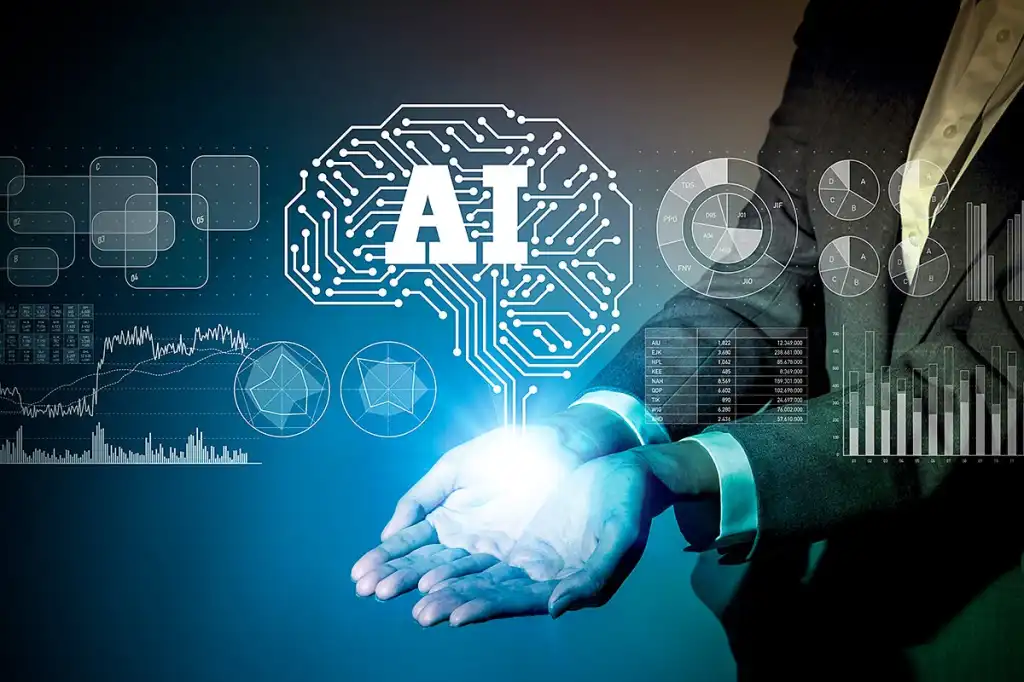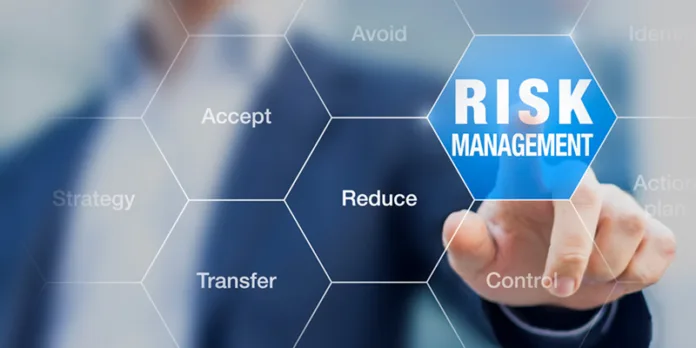
This paper explores how innovation and technology play a significant role in project risk management. It highlights how advancements in technology have revolutionized the way risks are assessed, analyzed, and managed. The paper examines various technological solutions like data analytics, artificial intelligence, and predictive modeling, and how they can be used in different stages of project risk management. It also discusses the challenges of implementing these innovations and provides recommendations to successfully integrate them into projects.
INTRODUCTION
Risk management plays a crucial role in the success of any project. Identifying and mitigating potential risks are essential for organizations to achieve project objectives and deliver expected outcomes. With the rapid evolution of technology, innovative solutions have emerged that significantly enhance the effectiveness of risk management processes. This white paper aims to explore the impact of recent technological advancement in project risk management and provide insights into its application and benefits.
TECHNOLOGICAL ADVANCEMENT IN PROJECT RISK MANAGEMENT
Project Risk Management involves several stages, such as risk identification, qualitative and quantitative risk analysis, risk response planning, and continuous risk monitoring and control. Each stage employs multiple strategies for identifying, analyzing, and mitigating risks. Traditionally, these risk management stages relied on manual methods for data analysis and processing, as well as the development of mitigation and response strategies.
However, this approach posed significant risks in terms of the accuracy of data analysis, assumptions made, and the proper integration of historical information. It also required extensive human involvement and consumed a substantial amount of time to arrive at risk management strategies. Fortunately, recent technological advancements have contributed to fostering innovative approaches in all stages of project risk management. These advancements have introduced tools, techniques, and software solutions that enhance the accuracy, efficiency, and effectiveness of risk management processes.
The following are some notable technological advancements that contribute to the domain of Project Risk Management.
Data Analytics: By utilizing data analytic tools, organizations can extract valuable insights from extensive project-related information. Data analytics facilitates precise risk identification, assessment, and prioritization, empowering more informed decision making and efficient resource allocations. These technologies can sift through vast amounts of information and identify patterns, trends, and anomalies that humans may have overlooked. This improves the accuracy and thoroughness of the overall process. There are several AI-based data analytic tools such as Procore, Oracle Primavera, IBM Watson, and Autodesk BIM etc. These tools aid construction project teams in analyzing project data, identifying risks, and making data driven decisions.
Artificial Intelligence (AI): AI technologies, such as machine learning and natural language processing, enable risk managers to automate repetitive tasks, analyze complex datasets, and uncover patterns that may be neglected by human analysts. Machine learning can be used in project risk prediction to enhance the accuracy and effectiveness of risk assessment and mitigation strategies. By identifying correlations between various project attributes and risk outcomes, machine learning models can uncover valuable insights that aid in risk prediction. AI-based systems enable real-time monitoring as well, allowing for proactive risk response strategies.
Predictive Modelling: Predictive modelling plays a crucial role in risk identification and management in construction projects. Predictive modelling begins with the analysis of historical project data, including project schedules, cost estimates, resource allocations, and performance metrics. By analyzing historical data and using statistical and modelling techniques such as regression, decision tree or ensemble methods, predictive modelling enables the simulation of various scenarios and provides valuable insights into potential risks and their likelihood of occurrence.
By examining past projects, patterns and trends can be identified, allowing for the prediction of potential risks in future projects. This enables project stakeholders to estimate the probabilities of different risk scenarios and plan mitigation strategies accordingly. Some of the AI-based predictive modelling software that can be used for risk analysis in construction projects are Oracle Primavera Risk Analysis, @RISK, Predict! Risk Controller and Safran Risk. Such software allows us to create risk models and perform simulations such as Monte Carlo simulation and provides a collaborative environment for stakeholders to manage risks and track their progress throughout the project lifecycle.
The implementation of cutting-edge technologies can bring about notable advancements and refinements in various domains within construction projects risk management. The following are key domains where the impact of these technologies enhances risk management practices.
Risk Identification: Risk identification can be made effective by automated risk identification tools and sentiment analysis techniques. These techniques efficiently scan project documentation, stakeholder communications, and external data sources to identify potential risks and emerging trends. These technologies improve the comprehensiveness and accuracy of risk identification processes.
Risk Assessment: Technology-enabled risk assessment tools and platforms provide a systematic approach to evaluate the likelihood and impact of identified risks. These tools facilitate quantitative risk analysis, sensitivity analysis, and scenario modeling, enabling risk managers to make data-driven decisions and prioritize risk response efforts.
Risk Response / Mitigation: Risk mitigation / response can be made effective by real-time monitoring systems that detect early warning signs and trigger alerts. Digital collaboration platforms and project management tools also enable effective communication, coordination, and execution of risk response plans.

INTEGRATION OF TECHNOLOGY INTO CONSTRUCTION PROJECTS
The integration of technological advancements into construction projects can yield significant benefits, particularly in the following key modules. Embracing these technologies has the potential to substantially enhance project risk performance.
Building Information modelling (BIM): BIM software allows for the creation and management of a digital representation of the project, including its physical and functional characteristics. BIM platforms often include risk assessment modules that help identify potential clashes, constructability issues, and safety risks within the project design, enabling proactive risk mitigation.
Construction Risk Management Software: Several software solutions specifically target risk management in construction projects. These platforms typically offer features such as risk identification, assessment, tracking, and reporting. They may include modules for hazard analysis, subcontractor management, incident tracking, and compliance monitoring.
Site Inspection Apps: Mobile applications designed for site inspections can enhance risk assessment in construction projects. These apps allow project teams to capture and document site conditions, identify safety hazards, and report potential risks in real-time. They often include features like photo capture, annotation, checklists, and automatic report generation. Mobile apps such as Procore, PlanGrid, iAuditor etc. are sophisticated apps that can help risk management at site level.
Project Risk Assessment and Analysis Software: There are specialized software tools available that focus on project risk assessment and analysis for construction projects. These platforms facilitate quantitative risk analysis, Monte Carlo simulations, sensitivity analysis, and decision-making support. They help project teams understand the impact of various risks on project outcomes and prioritize risk response actions.
Drones and Remote Sensing: Drones equipped with cameras and remote sensing technologies enable risk assessment in construction projects by capturing aerial imagery, 3D models, and survey data. They can identify potential risks such as unstable terrain, site access challenges, and safety hazards. Drones also help in monitoring construction progress and identifying deviations from plans, reducing schedule and cost risks.
Augmented Reality (AR) and Virtual Reality (VR): AR and VR technologies are increasingly being used for risk assessment and visualization in construction projects. These technologies allow stakeholders to experience a virtual representation of the project, identifying potential risks, design flaws, and safety issues before construction begins. They can simulate scenarios such as safety walkthroughs to assess and mitigate risks.

CHALLENGES AND RECOMMENDATIONS
While the integration of modern technology has significant potential for enhancing risk management in construction projects, there are also notable constraints that hinder organizations from fully benefiting from its implementation. Addressing these limiting factors is crucial to achieving successful integration and extracting maximum benefits for construction projects’ risk management.
Implementation Challenges: Resistance from project teams and stakeholders can impede the successful implementation of modern technology. People may be reluctant to adopt new tools or processes, leading to resistance and slower adoption rates. Effective change management strategies, communication, and stakeholder engagement are crucial while addressing this limitation.
Skill Set Requirements: Effectively utilizing modern technology in risk management demands specialized skills and knowledge. Organizations may lack personnel with the requisite expertise to operate and maintain these technologies. Offering comprehensive training programs and hiring skilled professionals may help address this limitation.
Compatibility and Integration: Integrating modern technology into existing risk management systems can be challenging. Compatibility issues between different software and platforms can hinder seamless integration. Organizations must ensure that the chosen technology aligns with their existing infrastructure and can integrate with other tools and systems.
Financial limitation or Cost considerations: One of the primary limitations is the financial burden associated with acquiring and implementing modern technology solutions. Advanced technologies often require significant investments, including hardware, software, training, and maintenance costs. Organizations need to address this cost factor to make the adoption of technology financially feasible.
Data quality and availability: AI models heavily rely on data for training and making accurate predictions. If the quality of the data used to train the model is poor or incomplete, it can impact the effectiveness and reliability of the risk management tool.
Lack of domain-specific knowledge: AI models are only as good as the data they are trained on. Without a proper understanding of the construction domain and its unique risk factors, the AI-based tool may not be able to capture all relevant risks accurately. It’s crucial to combine the AI tool with human expertise to interpret and validate the results.
Scalability: Some modern technologies may lack scalability, particularly when it comes to handling larger construction projects or multiple projects simultaneously.
Organizations must address these challenges through proper change management, strategic planning, and robust cybersecurity measures. This would include investing in employee training programs to enhance technological proficiency. Organizations should also carefully assess the scalability of the technology solution to ensure it can accommodate future growth and project demands.
CONCLUSION
Innovation and technology have revolutionized project risk management, enabling organizations to enhance their ability to identify, assess, and mitigate risks effectively. By leveraging data analytics, artificial intelligence, and predictive modeling, project teams can make informed decisions, improve resource allocation, and proactively address potential disruptions. However, the successful integration of these technologies requires addressing implementation challenges, nurturing a skilled workforce, and ensuring scalability and seamless interoperability. Embracing innovation in project risk management equips organizations with the tools and capabilities to drive successful project outcomes and maintain a competitive edge in today’s dynamic business landscape.
About the Author:
The author is a Civil Project Manager with over 25 years of invaluable expertise in the construction industry. From conducting feasibility studies to ensuring project completion and smooth handover, he has demonstrated exceptional leadership and management skills in a diverse range of projects.

